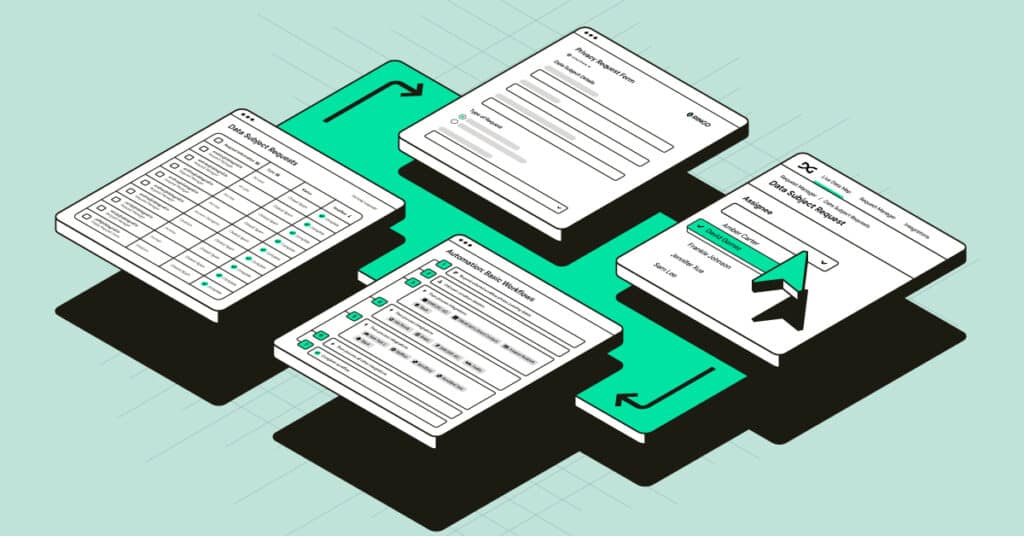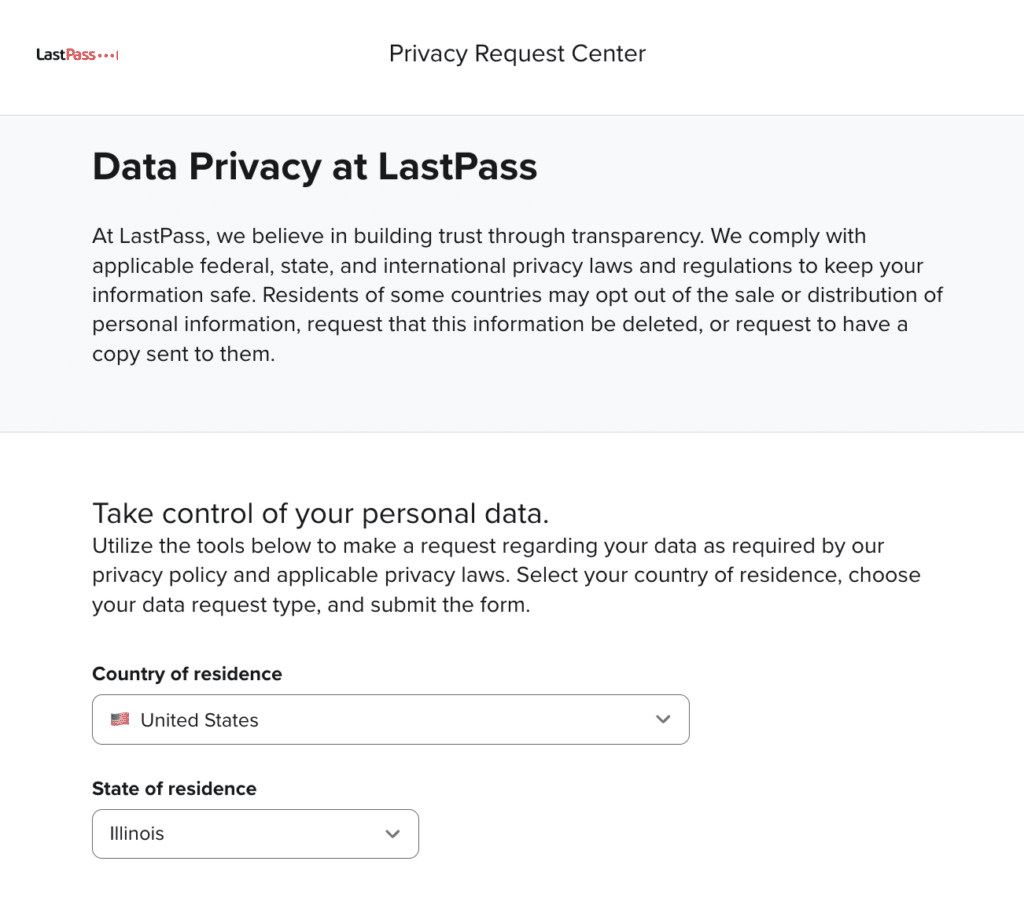Managing Data Subject Requests (DSRs) efficiently is more than just a compliance checkbox– it’s a strategic opportunity for brands to free up time to focus on higher level projects. With increasingly unique state privacy laws and the evolving nature of data privacy, it’s now crucial for organizations to streamline their DSR process in order to reduce risk and ensure compliance.
We’ll explore the best practices for managing DSRs efficiently, detailing how you can save your business time, enhance your security, and ensure compliance with today’s increasingly complex regulatory landscape.
Let’s get into it.
5 Essential Practices For a Data Privacy Compliance Tool
Automation in DSR management is a powerful tool for privacy professionals, but it’s important to understand where and how it can be most effective. That’s why we’ve compiled a list of five fundamental efficiency features and strategies that underpin the lifecycle of a DSR.
1. Filter out spam from your privacy requests
Spam accounts and bad actors can slow down your privacy request process with unnecessary and misleading requests. Depending on your data privacy management software, you may be able to automatically filter these requests out of your workload.
One way to minimize these requests is to require email verification. For DataGrail customers, you can also enable DataGrail Smart Verification to automatically apply existing data to verify the identity of requesters. This step is crucial for reducing the need for additional PII collection and time spent manually verifying requesters.
2. Optimize Automation Based on Policy and Region
As privacy laws become more intricate, automation plays a significant role in managing compliance. Privacy professionals choose solutions that can automate responses based on policy and region, and look for features that adapt to geographic regulations and automate compliance tasks.
With DataGrail, a data subject’s location will be prefilled per their IP address while submitting their request, which they can adjust. From there, the location is used to dynamically update request type options and apply the correct policy. This ensures that you remain compliant with the latest regulations without manual adjustments.
3. Leverage Integrations for Maximum Efficiency
Effective DSR management requires seamless integration between your DSR processor and other tools you use.
We recommend opting for a DSR compliance software that offers robust integrations that fit with your existing systems in order to ensure efficient request handling. For example, many DataGrail integrations can accurately and immediately access, update, or delete data from third-party systems with no human intervention required at all.
4. Automate Internal Database Deletion and Modification
Automating internal database deletions is another crucial aspect of a comprehensive DSR strategy. On-premise data is often some of the most complex to navigate for a privacy request. By leveraging tools like DataGrail Internal Systems Integration (ISI), you can automate the deletion, modification, and return of data from internal systems in accordance with privacy regulations and your business practices.
Opt for a tool that simplifies this process by connecting to your internal data systems securely, ensuring compliance with privacy laws and reducing manual work.
5. Utilize Automated Workflows
The more complex your datasets and larger your tech stack, the more complex processing privacy requests becomes. Orchestrating a privacy request through the right people and right software can become extremely unscalable, time-consuming and with many steps open to error. That’s why you should ensure your data privacy compliance tool can determine how certain requests should be handled automatically.
DataGrail customers use Request Manager’s Workflows feature to expedite request processing by intelligently skipping steps when they are not necessary for compliance. Some of the most common use cases for this functionality include:
- Differentiate employee from customer records, and queue only access, deletions, or modifications relevant to that record type
- Specify the order in which data is deleted, ensuring that data isn’t accidentally repopulated by another integration further down the queue
- Smart-deny requests based on location, removing the need to manually review requests from data subjects that do not fall under any legal policy
- Skip systems required to retain data, for example allowing some systems to return data on access requests, but not delete if the data is required for another reason, such as SEC compliance
Taking a little time to set up workflow logic proactively ensures that all future requests are handled efficiently in a predictable pattern that ensures compliance.
How These Practices Lead to Strategic Advantages
Enhance your security and compliance.
Automation not only optimizes resources, but also bolsters security and compliance. Automated systems are configured to follow precise legal protocols and give you complete confidence in your data privacy program.
As regulations become more complex and the volume of DSRs increases, automating your DSR processes is not just a matter of efficiency—it’s a crucial step towards strengthening your privacy posture and ensuring compliance with data protection laws. As you look to improve your DSR process, consider focusing on automation capabilities that can manage the volume and complexity of your requests in a way that’s both functional and productive.
When exploring options, you might find that platforms offering all of the aforementioned features can support your privacy efforts in a more comprehensive way. For those already using privacy solutions, be sure to check which of these features are and aren’t in place so that you can keep your data management practices as efficient and compliant as possible.
Save more time for strategic work.
Considering all of the features and strategies we’ve outlined above, automation in DSR management isn’t just a convenience, it’s a game-changer for privacy teams. By automating routine DSR tasks, businesses can free up their teams to focus on more strategic initiatives.
Still not convinced? Businesses manually processing DSRs also face high costs as the number of requests increases. Our 2024 Data Privacy Trends Report found that manually processing DSRs could cost companies around $811,305 per every million identities. That’s why automating your DSR process with our recommended practices won’t just save you more time, it will also save you more dollars.




